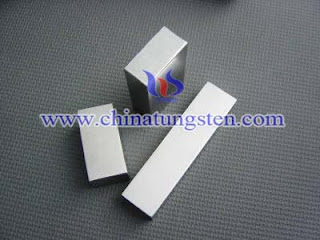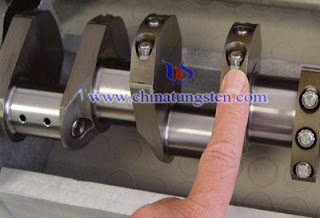Tungsten heavy alloy having high melting points as well as high specific gravity, tungsten is characterized by good processability. Precise control under the action of external force requires the stability of the object.
A part that is installed for this function for the stability of objects is Balance Weights. Since Balance Weights have the advantage of low volumes in case their specific gravity is higher, alloys containing at least 92% tungsten with high strength and corrosion resistance are required.
2015年12月2日星期三
Tungsten Counterweight Parts
Counter weights made from our tungsten heavy alloy compensate for oscillations, weight transfers, imbalances and vibrations, create or shift centers of gravity and more generally ensure the optimum balance.Counterbalance weights are crucial components in many different applications. They help reduce the loads that parts are exposed to and consequently increase their service life. Such as:
Aviation and aerospace: Propeller and rotor blades, Aircraft weights
Automotive industry: Crankshaft counterweights/balancing and chassis weights, Vibration dampening governors, Balances of flywheels and turbines
Watch industry: Bobs/weights on watch rotors
Optical industry: Microscopes and measuring instruments
Aviation and aerospace: Propeller and rotor blades, Aircraft weights
Automotive industry: Crankshaft counterweights/balancing and chassis weights, Vibration dampening governors, Balances of flywheels and turbines
Watch industry: Bobs/weights on watch rotors
Optical industry: Microscopes and measuring instruments
Key Features of Tungsten Alloy Weight
Robust construction and excellent strength
Precise dimensions therefore easy to install
Negligible maintenance and sturdiness
Excellent quality polishes to assure its rust proof nature
It is ideal for high density applications and also used in radiation shielding
The offered tungsten alloy has low alloying tendency between electrode and work-piece
Tungsten counterweight is widely used in cranes, traction lifts such as elevators, funfair rides and many others.
It is used in many rotating systems to reduce vibrations due to imbalances in the rotating assembly
Light-weight, compact and quick installation design
High tolerance and robust construction
Precise dimensions therefore easy to install
Negligible maintenance and sturdiness
Excellent quality polishes to assure its rust proof nature
It is ideal for high density applications and also used in radiation shielding
The offered tungsten alloy has low alloying tendency between electrode and work-piece
It is used in many rotating systems to reduce vibrations due to imbalances in the rotating assembly
Light-weight, compact and quick installation design
High tolerance and robust construction
Tungsten Pinewood Derby Weight
For cars with less than one-half of the original block remaining, lead or tungsten weight is generally required. For minimalist cars (very little wood), tungsten is generally needed to attain proper weight. For cars with one-half or more of the block remaining, then steel or zinc will work fine.
Tungsten is a metal with one of the highest densities. It is 1.7 times heavier than lead. Only gold, platinum, and a few other rare and expensive metals have a similar density. Tungsten is non-toxic and environmentally friendly so it is gaining increased use in weighting applications where lead is not appropriate. For example lead has been banned in many streams, so tungsten is often substituted for lead weight on fishing flies.
2015年11月24日星期二
Tungsten Alloy Crankshaft Weight
Tungsten alloy crankshaft weight, also known as tungsten alloy crankshaft balancing, is made from our tungsten heavy alloys. Crankshaft balancing is important to high performance engines in racecars, aircrafts and others. High density tungsten is perfect for crankshaft balancing with limited size and space.
For some engines it is necessary to provide tungsten alloy crankshaft weight for the reciprocating mass of each piston and connecting rod to improve engine balance. These are typically cast as part of the crankshaft but, occasionally, are bolt-on pieces. While counter weights add a considerable amount of weight to the crankshaft, it provides a smoother running engine and allows higher RPM levels to be reached.
Tungsten Weight
The special high specific density characteristics and slight or non-magnetic properties make tungsten ideal for a variety of low volume/high weight applications in the Aerospace industry. Tungsten products are installed in a variety of aircrafts and serve as balance weights in the wing fuselage, vertical (rudder) and horizontal (elevator) stabilizers, in helicopter rotors (bifilars), propellers and Aerospace instruments. The majority of balance weights that supplies are flight safety products.Tungsten products have been installed in more than a dozen different types of aircrafts, including the Boeing 747-400, 737, 767, 757, Gulfstream G-150 & G-200 and Sikorsky UH-60 (Black Hawk).
Different Applications of Tungsten Balancing Weight
Balancing weights are crucial components in many different applications. They help reduce the loads that parts are exposed to and consequently increase their service life. Here are a few examples:
Aviation and aerospace: propeller and helicopter blades
Automotive industry: crankshaft counterweights and chassis weights
Watch industry: bobs on watch rotors
Sports equipment: golf clubs
Optical industry: microscopes and measuring instrument
Oil and gas drilling: down hole logging tools
Balancing Weights Made of Tungsten Alloys
Balancing weights made from our tungsten heavy metal for oscillations, weight transfers, imbalances and vibrations, create or shift centers of gravity and more generally ensure the optimum balance.
Tungsten heavy metal composite materials are used as balancing weights on crankshafts or in balance shafts in formula 1 racing cars or large diesel engines. In addition, due to their high density, high modulus of elasticity and optimized ease of mechanical processing, our tungsten heavy metal alloys are ideally suited for use as damper and absorber components in the drive train. In the aviation and aerospace industries, our tungsten composite material provide outstanding performance, for example, in propeller and helicopter blades, rudders, radar equipment and avionics systems.
2015年10月9日星期五
Tungsten Sporting Goods for Firearms and Golf Clubs
Tungsten Heavy Alloy concentrates maximum weight in the smallest possible space. Use in golf clubs and tennis rackets increases the sweet spot size and adds the stability while reducing shock and vibration for increased power and control. Counterbalance fine tuning and inertial masses to shift through center of gravity.
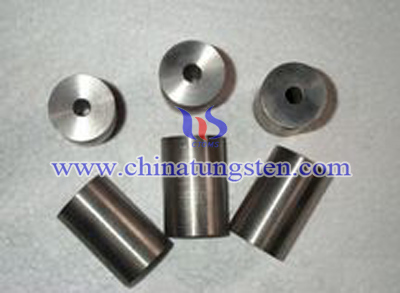

Tungsten Racing weights for Chassis and Skid Plates
Tungsten Heavy Alloy is superior to lead in terms of durability, dimensional stability, density and low toxicity. Tungsten Heavy Alloy does not suffer from the radioactivity or high chemical reactivity of depleted uranium.
Tungsten Alloy is used by professional racing teams to fine-tune the chassis in a variety of racing forums. Tungsten Heavy Alloy offers up to 50% more weight in a given volume, with the added advantages of direct attachment via threaded holes and the freedom from deformation.
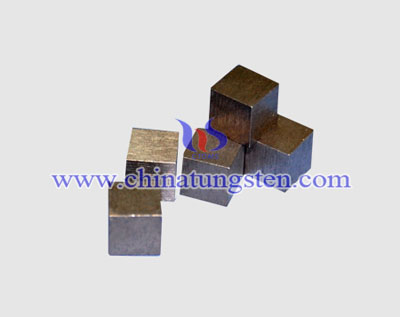
Tungsten Alloy is used by professional racing teams to fine-tune the chassis in a variety of racing forums. Tungsten Heavy Alloy offers up to 50% more weight in a given volume, with the added advantages of direct attachment via threaded holes and the freedom from deformation.

The benefit of Tungsten Golf Weigh
Tungsten Heavy Alloy has been the preferred material as counterbalance weight for the golf. Tungsten Heavy Alloy weights are typically machined to precise tolerances and are provided with a protective coating to the customer specification.
Provides more stability without anchoring
Quiet your hands
Gives you better distance control
Promotes a smooth pendulum stroke
Aircraft counterbalance weights and inertial masses
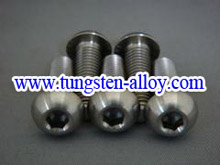
Provides more stability without anchoring
Quiet your hands
Gives you better distance control
Promotes a smooth pendulum stroke
Aircraft counterbalance weights and inertial masses

2015年10月8日星期四
Tungsten 8-Gram Tip Weight
Significantly heavier than lead, the tungsten 8-Gram Tip Weights pack a mighty weight into a compact footprint. These color-coded weights enable instant visual identification of tip weight size for convenience, and the resilient composition allows the weights to flex for ease of installation while still delivering long, reliable, rattle-free performance.
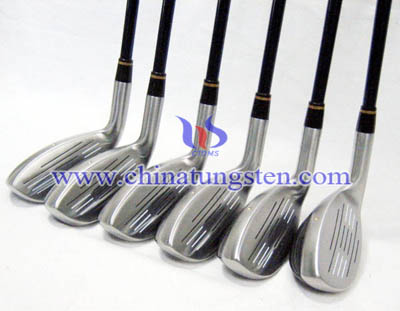
2015年9月29日星期二
Tungsten Barrel Shape
The barrel forms the main part of a dart. When we are
speaking of "buying a (new) dart" we mean getting a new dart barrel.
Nowadays barrels are available in almost every possible shape, with a
wide selection of knurl or rings on the surface for a comfortable and safe grip.
The main tungsten dart Barrels' Shapes are: - cylinder
- ton
- torpedo
The selection to the left shows tungsten dart barrels with 2 threads (soft tip), to the right are fixed-tip steel tungsten dart barrels.
It's not possible to say which one
is the "right" one. Based on a very theoretical reasoning the long
cylindrical tungsten dart barrels could be the best of them because it
is the slimmest and allows the tightest grouping. Good for 140s and
180s. But this reasoning doesn't help you when you are not able to
handle such a barrel. Selecting the right shape is a matter of
personal preference. Choose what feels comfortable for you. This is
much more important than an abstract or "academic" reasoning about
theoretical advantages or disadvantages of some shapes.
We appreciate very much to receive
your particular designs, and always try all out to meet any specific
requirement. The motto for our company is that, there never be minimum
order, but any one could bring to us the most potential buyer.
Tungsten dart barrel weight
Tungsten dart barrel weight is a never ending story.
A lot of people want to know which weight they should throw, which
weight is the most common one, what's the average weight and so on.
There is no right answer to these questions. For the "average weight"
question there probably is an answer, but it doesn't make much sense.
An example of two world champions:
Dennis Priestley throws 14 gram darts.
Raymond van Barneveld throws 26 gram darts.
Raymond van Barneveld throws 26 gram darts.
If you ask the average question now the answer will be 20 grams, but does this make sense when the weights vary that much?
For a beginner steel dart player I recommend a tungsten dart barrel weight
between 22 and 25 grams, which is slightly on the heavy side. The
reason is that you need to develop a basic throwing skill in order to
reach a certain initial level of play with darts on the heavy side. You
would probably reach such a level a bit faster with lighter darts, but
lighter darts don't force you to develop a somehow decent technique
which will make later improvement a lot harder. Heavier darts also
forgive slight technical inconsistencies (in other words: errors)
better than lighter darts -- I like to tell heavier darts more
"good-natured" because of this. The lighter the dart the more sensible
it reacts to what you are doing -- slight intentional adjustments as
well as slight technical errors or deficits.
Once you have got some darting
experience and a decent technique you may find the heavier dart not
that convincing any longer because of its good-natured behavior. If you
then think you could use a dart that reacts more sensible you should
consider going lighter.
Soft tip players won't have that much
of a choice for their dart weight. The limit set by the machine
operators and leagues usually is below 20 grams. If you are a beginner
in soft tip the only advice I can give you concerning the weight of
your darts is start at the maximum allowed weight.
We appreciate very much to receive
your particular designs, and always try all out to meet any specific
requirement. The motto for our company is that, there never be minimum
order, but any one could bring to us the most potential buyer.
Tungsten darts barrel materia
Today's standard material is
Nickel-Tungsten. Tungsten is a very dense material, so tungsten darts
are with considerable weight can be made quite slim. The invention of
tungsten dart barrels had a big impact on the sport. With the new dart
barrels, it is possible to achieve much better grouping than before, and
the averages in pro games have improved dramatically. It is not an
overstatement when this development is referred to as "the tungsten
revolution".
Before the tungsten revolution, dart
barrels were mainly made of brass. Brass dart barrels are still used by
some players because they are much cheaper than tungsten. But brass
dart barrels are ancient technology now, so I can't recommend them.
Because of technical difficulties with
manufacturing 100% tungsten darts are not available. All "tungsten"
darts you can buy are in fact made of tungsten alloys, with
Nickel-Tungsten being the most common one. When you buy a dart the
amount of tungsten in the alloy is given by a percentage number. So a
common "80% Tungsten" dart has 80 percent tungsten and 20 percent
Nickel, Copper and/or Ferro. Tungsten darts are available from 80% to
over 90%. The more tungsten the slimmer - and the more expensive - the
tungsten darts are. If the high-percentage tungsten darts are worth the
higher price is an open question. Personally I think that 80% tungsten
dart barrels are good enough for almost everyone.
Remember: the only benefit from a high
tungsten share is that the dart barrels can be made slimmer than a
dart with the same weight and a lower tungsten share. In no way do
higher tungsten percentages indicate some sort of overall better quality
or better machining.
2015年9月28日星期一
Tungsten darts
Tungsten is an extremely dense metal, considerably more so than brass or nickel; this increased density allows more weight in a smaller (thinner) barrel, making close grouping easier while maintaining the weight and minimising bounce-outs. These high-density tungsten darts resist wear far better than brass or nickel. Tungsten darts are recommended for all darts players who have played competitively at some point and are the darts used by all professionals because having all of the darts mass concentrated into such a small, thin area vastly enhances the control of the dart. When buying tungsten darts, it is important to pay attention to the percentage of tungsten in the dart barrels because it is central to the quality of the dart; in general the higher the percentage the better, and more expensive, the dart.
2015年9月9日星期三
Tungsten Alloy is an Excellent Material for Use in Crankshaft Balancing
Tungsten heavy alloy means it can be used to produce compact, highly durable weights for use in crankshaft balancing. Tungsten alloy weights can be placed in the precise location where
they are needed to provide optimum performance. The fact that tungsten alloy balance weights are smaller than equivalent steel weights also means that external balancing may not be required in engines where internal space is limited.
Tungsten alloy Vehicle Weight
Tungsten alloy could used for chassis and rail weights for high performance vehicles. Weights are made from our heavy metal tungsten alloy. These weights have a density that is 150 that of
lead.
The material is not toxic or as soft as lead, making it the perfect choice for balancing vehicles or meeting weight requirements. Car numbers can be permanently machined into the material
for identification purposes.
Tungsten Alloy Weight Typical Applications
Weights and Counterbalances for aircraft control surfaces and rotor blades, guidance platforms, balancing of flywheels and turbines, vibration damping governors, fuse masses, and weights
for selfwinding watches. Because of the physical properties of high density metal, it is often used as both a weight and structural member.
Used extensively to balance crankshafts in high performance engines. Individual weights are stocked. See our weight chart for formulas and information to solve balancing problems.
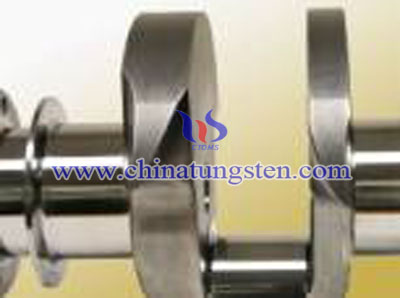
Tungsten Weights and Tungsten Counterweights
From the tiny, precise tungsten weights in self-winding watches to the massive, perfectly-balanced rotors on an aircraft, the unique physical properties of tungsten weights and tungsten counterweights bring exceptional quality to a variety of applications.
Tungsten weights and tungsten counterweights are currently adding value to:
aircraft control surfaces
aircraft rotor blades
guidance platforms
balancing of fly wheels and turbines
vibration dampening governors
fuse masses weights for self-winding clocks and watches
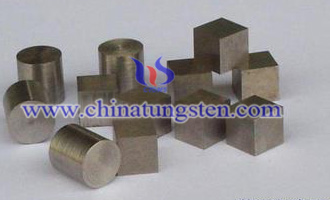
2015年8月17日星期一
Tungsten Alloy Aerospace Application
Tungsten alloy provides high performance solutions to customers in the aviation industry. Refractory metals like tungsten alloys have been the choice material for machined and fabricated products in critical aerospace applications.
Our machineable highdensity tungsten alloys, with a density over 60% higher than lead, help
stabilize helicopter rotor blades and the control surfaces of ailerons, elevators.
The advantage of Tungsten Balance Weight
Because pure tungsten is very brittle, we add nickel and iron to our composite materials and
apply the molten material in a liquid-phase sintering process. The nickel-iron phase binds the tungsten grains and consequently guarantees high ductility. The advantage: Our material offers optimized mechanical processing capabilities and is also able to with stand high loads.
Both easily processed and offering high densities, our balancing weights are ideally suited for applications in the watch industry. For example, machined weights made of non-magnetic are
used as bobs on watch rotors.
With their complex geometries, our weights are also used to balance microscopes and high-precision optical instruments as well as for other products in the semiconductor industry.
Tungsten Weight in a Tiny Space
Thanks to the high densities of tungsten alloy is up to 18.89 g/cm3, tungsten alloy offer
outstanding performance wherever a lot of weight has to be packed into tiny spaces.
Tungsten heavy metal composite materials are used as balancing weights on crankshafts or in balance shafts in formula 1 racing cars or large diesel engines. In addition, due to their high
density, high modulus of elasticity and optimized ease of mechanical processing, our tungsten heavy metal alloys are ideally suited for use as damper and absorber components in the drive
train.
Tungsten Alloy Balance Weights
Tungsten alloy balance weights are crucial components in many different applications. They help reduce the loads that parts are exposed to and consequently increase their service life. They could be applied in the follows areas:
Aviation and aerospace: propeller and helicopter blades
Automotive industry: crankshaft counterweights and chassis weights
Watch industry: bobs on watch rotors
Sports equipment: golf clubs
Optical industry: microscopes and measuring instruments
2015年7月29日星期三
Features of Tungsten Alloy Weight
The provided counterweight is widely used in submarine, sailboat and yacht for vibration damping and dynamic balancing purposes. This counterweight is manufactured by our team of
experienced professionals by utilizing quality tested tungsten at our well-developed
production unit.
Features:
Rigid construction and high density
Convenient to use flawless finish
Corrosion proof and light weight to use
Precise dimensions and high quality of wearing resistance
Application specific structure and corrosion resistance
Tungsten Alloy Counterweight Application
Tungsten alloy rivet rod is used on rivet gun to withstand hammer strength. It can resist the rivet gun power, reduce the buckling vibration. Usually, the rivet rod is designed into different shapes and sizes.
Tungsten alloy counterweight for oil drilling is widely used in the field of oil drilling. They are drill bits and counterweights in the professional drilling engineering.
Tungsten alloy gyro rotor is a key part for the aircraft heading gyroscope; the structure mainly includes the azimuth gyro, gyroscope rotor, the outer shaft (azimuth shaft) supports in the vertical
in the instrument shell through a bearing.Tungsten alloy counterweight for ball is used for
variable pitch propeller of the pitch control system on the aircraft as the failure of security
devices, in order to prevent the propeller speed much too fast. Tungsten alloy counterweight for ball can be used on the engine flywheel to store energy.
Tungsten Alloy Counterweight for Aircraft
Tungsten alloy counterweight for aircraft can be used as a failure of security devices to prevent the propeller speed too fast on the propeller control system. The rivet rod and crankshaft counterweight can also be used on the satellite, aircraft counterweight is help for satellite gravity to set precise positioning, and ensure its correct flight track.
Tungsten alloy counterweight for aerospace can be used in satellite, the helicopter rotor, and missile and aviation electronic equipment on the gyroscope.
Tungsten Alloy Counterweight
The tungsten alloy counterweight is formed by adding elements such as Fe, Ni, Cu, Co, Mo and Cr into tungsten serving as the matrix (the content of W is 85 to 99 percent). Tungsten alloy called high density alloy because its density is up to 16.5 to 19.0g/cm3. It also has the characteristics of high specific gravity, high strength, strong ray absorption capability, high thermal conductivity, small thermal expansion coefficient, good electrical conductivity, and good weldability and machinability, wherein the specific gravity is usually 16.5 to 18.75g/cm3; the tensile strength is 700 to 1,000Mpa; the ray absorption capability is 30 to 40 percent higher than that of lead; the thermal conductivity is 5 times that of mould steel; and the thermal expansion coefficient is only one second to one third of that of Fe or steel. In view of its excellent functions, the high density alloy is widely applied to the industries of aerospace, aviation, war, oil drilling, electrical appliances and meters, medicine and so on.
订阅:
博文 (Atom)
